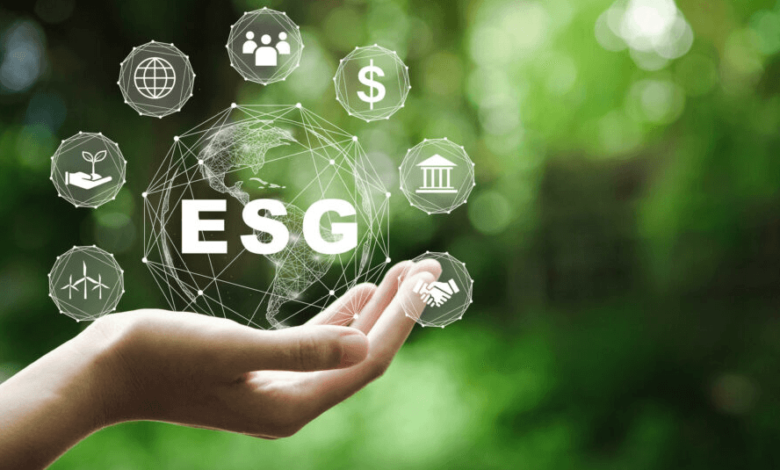The Synergy Between ESG and WHS Consultants: Building a Sustainable and Safe Future for Australian Businesses

In Australia, organizations continue to come under pressure to consider environmental, social governance (ESG) issues while maintaining rigorous Workplace Health and Safety (WHS) compliance standards. These two priorities that used to be treated as separate silos are now being integrated towards a more holistic framework aimed at promoting safer, sustainable, and socially responsible businesses. Both ESG consultants and WHS consultants have been at the forefront of this change by making sure that organizations not only comply with regulations but also surpass their ESG compliance targets. The goal of this blog is to highlight how collaboration between both ESG and WHS consultants can assist Australian firms in positively adapting to shifting regulatory requirements.
1. ESG And WHS: Growing Need for Integration
For most Australian businesses up until recently, the areas of ESG and WHS focused on two different spheres of work. The WHS domain dealt mainly with occupational safety and health concerns while the ESG encompassed elements like greenhouse emissions management at the corporate level which centered around social accountability. There has however been a paradigm shift over recent years with these domains being recognized as interlinked, therefore requiring management integration which drove firms to adopt a more comprehensive operating model. As with all changes in approach, these changes set new demands for business WHS consultants who ensure that employees are safe while going about their work.
In Australia, the growing complexity of environmental regulations, the shift towards renewable energy, and a greater emphasis on an employee’s wellbeing means that the work of ESG and WHS professionals now needs to integrate. This is intended to create a sustainable workplace that achieves health and safety compliance while meeting sustainability objectives. The link between these two domains remains stark as businesses that prioritize ESG alongside WHS are more operationally efficient, strategically positioned for ethical investment opportunities, and can secure sustainable success over time.
2. Driving Social Responsibility: A Shared Goal for ESG and WHS Consultants
Social responsibility forms the basis of both ESG WHS frameworks. With the assistance of ESG consultants, businesses are able to implement strategies aimed at fostering fair employment relations, diversity within and outside company operations, community participation and engagement as well as an ethically responsible supply chain. On their part WHS consultants look after the staff by addressing their personal health concerns and safety issues thereby creating an inviting workplace atmosphere. Both sets of consultants add value in ensuring that a business’s social responsibility undertakings are comprehensive in nature and fortified through collaboration. An example of this collaboration can be seen when an ESG consultant works with an organization and sets benchmarks for community engagement or employee welfare initiatives. At the same time a WHS consultant makes sure that proper employee safeguards are in place so these engagements meet safety standards. This multidisciplinary approach enhances the social value created by the organization integrating worker health and community volunteering under one unifying framework. For Australian businesses, this holistic approach demonstrates responsible corporate custodianship which shows commitment beyond compliance to societal needs.
See also: Essential Laptop Maintenance Tips: Stay Connected in Melbourne
3. Managing Risks With An ESG WHS Integrated Approach
In the current climate where businesses prefer to be risk averse, dealing with environmental and workplace issues such as health and safety is paramount. Climate change, waste creation, and resource depletion are examples of environmental concerns that ESG consultants need to address while workplace violence, stress, and occupational diseases fall within the scope of WHS consultants on employee wellbeing to avert injury risks professionally.
Merging these two areas allows Australian companies to manage risks more effectively. Companies can address employee safety concerns along with environmental issues, thus safeguarding employees and minimizing the company’s environmental impact at the same time. This comprehensive approach takes care of reputation-related damage, financial loss, and legal liabilities by ensuring compliance with WHS (Workplace Health and Safety) regulations alongside sustainability objectives.
4. Advancing Reputation and Compliance with ESG and WHS Synergy
New compliance regulations in Australia are requiring businesses to expand the scope of their responsibilities. Both ESG and WHS consultants aid businesses within strict legal frameworks. ESG focuses on sustainability matters, ethics, transparency for shareholders, while WHS consultants deal with national safety obligations such as those outlined by Safe Work Australia.
Today, meeting legal obligations such as environmental and health compliance is critical for a company’s reputation. Businesses are viewed as more responsible when they incorporate ESG and WHS together since consumers, investors, and regulators see them as more transparent and trustworthy. Around these two factors, businesses thrive with enhanced brand loyalty, improved investment opportunities, and increased market differentiation. With so many options in the market today, ethical branding with a strong reputation relies on aligning ESG with WHS.
5. Sustainability Meets Safety: Shared Responsibility for Business Success
Typically within an organization, sustainability and workplace safety are treated independently. ESG and WHS consultants working together bridge this gap protecting the environment while simultaneously ensuring employee safety. This holistic approach not only strengthens organizational resilience but also supports long-term sustainability efforts along with employee wellness.
For Australian businesses, this translates to implementing energy-efficient practices, minimizing waste, and providing a safe environment that does not endanger the health and wellbeing of employees. Firms are able to improve both WHS and ESG by embracing air quality improvement initiatives as well as using clean technologies in the workplace. There is collaboration between ESG and WHS consultants to operationalize these practices for companies so that they can achieve sustainable operations while fostering a healthy, safe working climate for their employees.
6. The Role of Technology in Integrating ESG and WHS Practices
Both ESG and WHS goals can be advanced using technology in varying degrees. Consultants now have access to sophisticated tools like data analytics for energy consumption tracking and wearable devices aimed at monitoring employee health. Smart technologies are being adopted more widely by Australian businesses which aids both ESG and WHS consultants in performing their duties optimally.
For instance, employing environmental monitoring sensors can pinpoint locations of overconsumption of energy or air quality concerns, and health monitors can track the physical conditions of workers providing feedback on their health. Through these technologies, businesses obtain holistic information regarding the environmental and ergonomic impacts and make informed decisions that improve sustainability while ensuring safety in the workplace.
7. The Future of Work: Changing ESG WHS Integration
While Australian businesses, and those elsewhere, continue to progress, the integration between ESG practices and WHS will deepen. The WHF will center around more pronounced socio-green accountability for both the ecosystem as well as the employees’ safety and wellbeing. ESG advisors will need to coordinate deeper with WHS advisors so that the two interrelated priorities are managed together efficiently and thoroughly through all levels of business operations.
Adopting this approach positions Australian businesses ahead in a competing market driven by sustainability. Businesses that proactively respond to corporate responsibility expectations by strategically aligning ESG with WHS will increase long-term profitability alongside robust employee engagement and trust from other important non-managerial stakeholders.
Conclusion
Integrating WHS with ESG Consulting is not just a novelty in Australia; rather, it is an important approach for companies that wish to succeed in today’s world. By joining forces, WHS and ESG consultants can assist organizations to improve compliance and risk mitigation while fostering an environmentally responsible and safe workplace. For Australian businesses aiming to optimize operations while mitigating regulatory burdens, proactive adoption of WHS/ESG integration will achieve their sustainability and safety objectives whilst enhancing market competitiveness.




